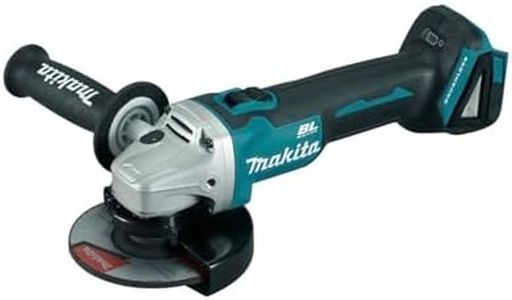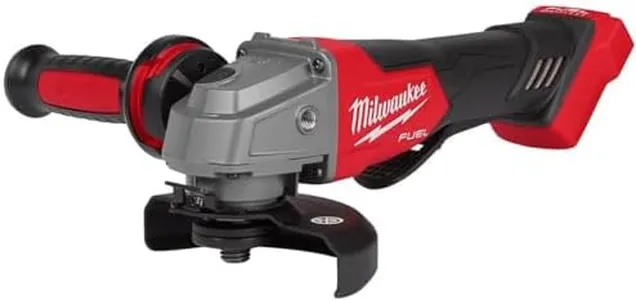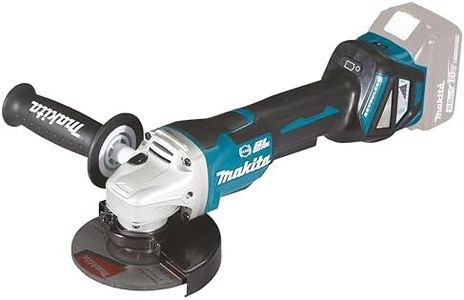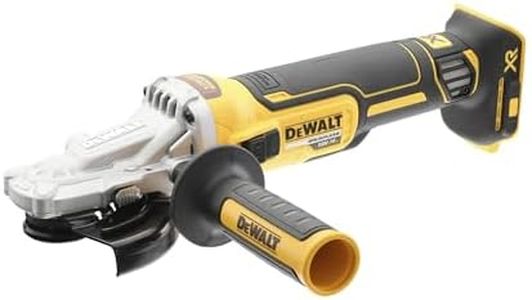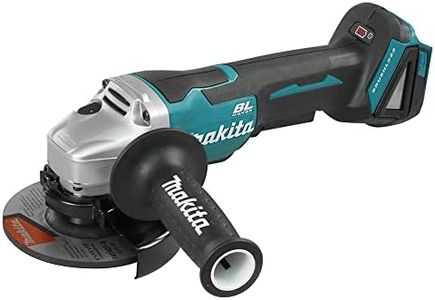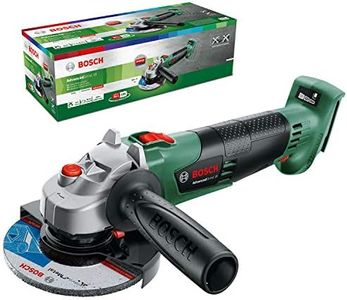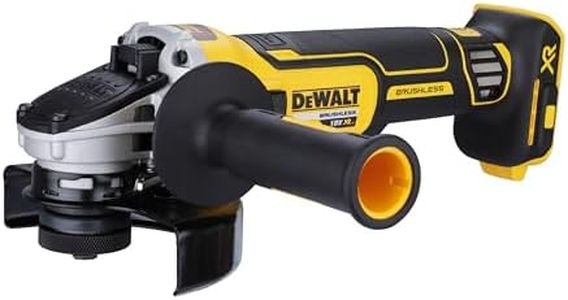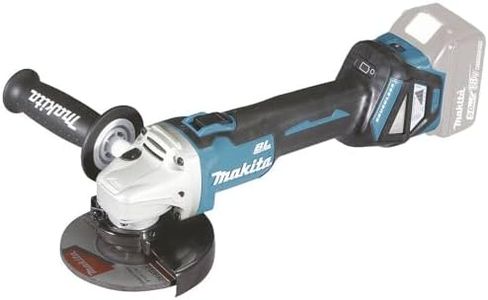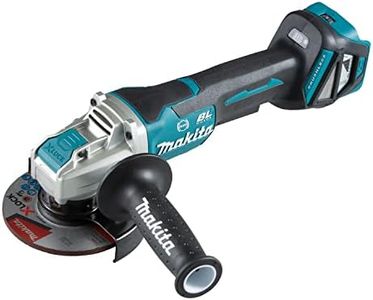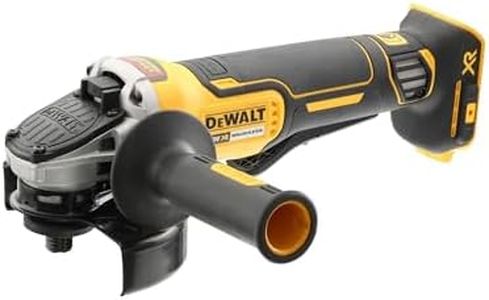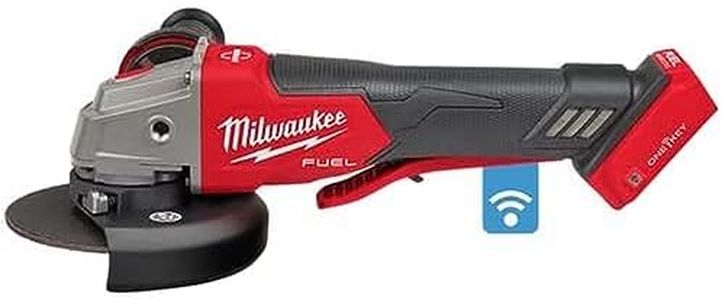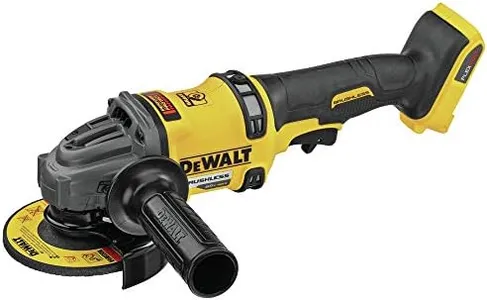We Use CookiesWe use cookies to enhance the security, performance,
functionality and for analytical and promotional activities. By continuing to browse this site you
are agreeing to our privacy policy
10 Best Angle Grinder
From leading brands and best sellers available on the web.By clicking on a link to a third party's website, log data is shared with that third party.
Buying Guide for the Best Angle Grinder
When choosing an angle grinder, it's important to focus on how you'll use it: Are you cutting metal, grinding concrete, polishing surfaces, or maybe working in tight spaces? Angle grinders come in a broad range of sizes and abilities. Understanding the differences between models will ensure your chosen tool is not only effective but also comfortable and safe for your work. Always consider your experience level, the tasks you expect to perform, and how often you plan to use the tool.Disc SizeDisc size refers to the diameter of the grinding or cutting wheel that the tool can use. This is important because larger discs can cut deeper and cover more surface area, making them well-suited for big projects or heavy material removal, while smaller discs are lighter and easier to control for delicate or detailed work. Common disc sizes are 4.5 inches, 5 inches, 7 inches, and 9 inches. For general home use and most metal or tile cutting, 4.5 to 5 inches is usually enough. For industrial use or thicker materials, consider 7 inches or more. Pick your disc size by matching the tool to the size and type of jobs you expect to do most often.
Power (Wattage or Amperage)Power tells you how strong the motor is. More power means the grinder can handle tougher materials, thicker metal, or longer sessions without overheating. Power is often listed in watts for corded models, or voltage for cordless ones, and sometimes in amps, especially in the U.S. Lower power (around 500-800W, or 6-7 amps) suits small DIY projects or lighter jobs, while higher power (1000W or more, 8+ amps) can deal with tough or extended use. Think about what materials you'll be grinding and how demanding the work will be: pick a power level that matches your workload so the tool doesn't struggle or wear out quickly.
No-Load Speed (RPM)No-load speed, measured in revolutions per minute (RPM), is how fast the disc spins with no resistance. Higher RPMs mean the grinder can work faster and make smoother cuts or grinds, important for quick tasks or fine finishes. Lower RPMs are better for fine control and safety, especially when working with delicate materials. Angle grinders typically range from 5,000 to 12,000 RPM. For most common tasks, standard speed models work well, but if you need to adjust speed for specific materials (like polishing), look for models with variable speed control.
Weight and ErgonomicsWeight and ergonomics refer to how heavy the tool is and how comfortable it is to hold for long periods. Heavier grinders are generally more stable and powerful, but can be tiring if used overhead or for long stretches. Lightweight models are easier for detail work or working in awkward positions, but may be less powerful or robust. Consider your own strength, how long you'll use the grinder at a time, and where you'll be using it to pick a comfortable balance between power and maneuverability.
Power Source (Corded vs. Cordless)The power source determines whether you plug the grinder into an outlet (corded) or use a rechargeable battery (cordless). Corded grinders give you steady power and are better for long or heavy-duty work, but they limit mobility. Cordless grinders offer freedom of movement, helpful for outdoor or remote locations, but can run out of battery during big jobs and are sometimes less powerful. Let your typical work setting—garage, workshop, job site—guide you to the best choice.
Safety FeaturesSafety features can include a quick-release or adjustable guard, soft start, anti-kickback, or two-stage triggers. These help protect you from sparks, accidental starts, or sudden jerks if the disc jams. If you're newer to power tools or plan to work in less controlled environments, extra safety features are a smart priority.
Accessory CompatibilityAccessory compatibility means how easily you can use different discs, guards, or attachments on your angle grinder. Some grinders use tool-free systems for fast disc changes, while others require a wrench. If you plan to switch between cutting, grinding, sanding, or polishing, look for models with easy accessory swaps or wide compatibility. This ensures your grinder is versatile enough to handle the various tasks you have in mind.
